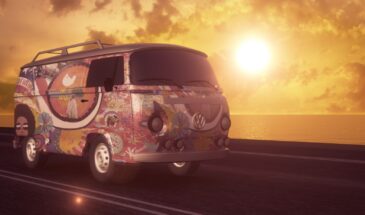- Date
- Itinerary
- Includes
- Not Included
- Gallery
Individual visits (min. 2 pax)
8 NIGHTS / 7 DAYS – PRICE AND DATE ON REQUEST
A journey that starts from the agricultural plain dominated by the Po, the large river that you can cross with a small ferry, like ancient pilgrims, until you reach the medieval walls of Lucca, passing through the coasts of the Tyrrhenian Sea. You will start from Pavia, one of the most beautiful surprises of the Via Francigena, which preserves the layered memory of Romans and Lombards, traveling by bicycle through the agricultural plain to the Po crossing in Piacenza, which will lead you to Emilia. Are you ready to enter one of the mythical territories of Italian food and wine, home of Parma Ham, Culatello di Zibello, Parmigiano Reggiano? Don’t eat too much though, the trip still holds some nice surprises for you, such as the Cistercian abbey of Chiaravalle della Colomba, and the cathedral of Fidenza, whose bas-reliefs will make you retrace the history of the pilgrimage. You will continue your journey through the Parma hills, an appetizer of the Tuscan hills, up to the descent towards Pontremoli and the crossing of Lunigiana, a land of castles and medieval villages. Finally Marina di Massa, where you can put your bicycle down for a nice swim, to end your trip to Lucca, with its picturesque elliptical square.
Tourist tax to be paid locally
Medium difficulty level The tour follows small cycle paths and country roads; the terrain is mainly hilly. Total km 331 Type of city bike or touring bike Luggage transport
Tour organize from Top One tour operator
Request to booking@top-one.it
Thanks to our services you can complete the organization of your trip and also book your flight, transfer from the airport to your hotel or car hire.
SEARCH AND BOOK FLIGHT
RESERVE TRANSFER
SEARCH FOR CAR HIRE
ITINERARY
Day 1 Florence
Arrival in Florence and private transfer to a 4-star hotel in the historic center of Florence. Dinner in a restaurant in the historic center.
Day 2 gardens in Florence
In the morning visit Lubera to the Garden of the Villa Medici di Castello. The Castle commissioned by Cosimo I de ‘Medici in 1535, is one of the most beautiful and symbolic of the Medici Villas. The garden, with its caves, sculptures and water features, wants to be a tribute to the good and just rule of the Medici from Arno to the Apennines. The numerous statues, commissioned by famous artists of the time and the numerous potted citrus plants adorn this beautiful garden. Second visit to the Villa Medici in Petraia. The gardens of Villa Petraia have changed significantly since they were commissioned by Ferdinando de ‘Medici in 1568. The original terraces have remained, but many of the beds have been redesigned through the centuries creating a sweeter and more colorful style. At the back of the villa is the park which is a perfect example of the design of the European mittle landscape. Time available for lunch, in the afternoon visit of the Boboli Gardens, design of the Italian garden from the Renaissance to the 19th century. This garden it contains all the essential elements for the Italian garden from the amphitheater to the island garden, citrus trees, winding along avenues through the woods. The gardens have been recently renovated with many thousands of replanted shrubs, bringing it back to the magnificent park that once was.From the Boboli garden you will reach our hotel on foot and while on foot the guide will show us the most important masterpieces of Florence. Free dinner
Day 3 Gardens in Florence
In the morning i Visit to the gardens of Villa Medici in Fiesole. Villa Medici, commissioned in 1450 by Giovanni de ‘Medici and designed by Michelozzo di Bartolomeo it was the first Villa dei Medici built on a new design, rather than deriving from the renovation of an existing castle. The layout of a terraced garden, which still exists today, was included in the original. The evolution of the Villa Medici gardens from the original Renaissance design to the latest works created by Cecil Pinsent is still clearly visible today. Then we will visit Villa Le Balze. This villa together with its gardens was commissioned in 1912 by the American philosopher Charles Forte. Cecil Pinsent created this original project along one of the steepest hills above Florence. The garden consists of a series of “green rooms” along terraces which draws the visitor in by providing glimpses through the windows and doors into the next space. Free time for lunch, in the afternoon visit to Villa Gamberaia. Edith Wharton wrote of Gamberaia: ‘Probably the most perfect example of the art of producing a great effect on a small scale …’ the history of this garden dating back to the 16th century but most of the garden as it is now laid out was designed by the Capponi family who bought the property in the 18th century. Many changes, between which the famous parterre of water were commissioned in 1920 by the then Hungarian owner Princess Ghyka whose chief gardener, Martino, was the father of one of the most important Italian landscape architects, Pietro Porcinai. Return to the hotel and free time.
Day 4 Siena,
Villa Cetinale, Castle of Celsa, Villa La Foce day trip to the magnificent gardens of Siena. Visit to the Villa Cetinale: the origins of this date Garden Back to 1676 when Claudio Chigi of the rich Sienese banking family commissioned the architect Carlo Fontana for the construction of the Villa and its magnificent gardens. When Lord Anthony Lambton purchased the Villa from the Chigi family in 1977 he dedicated a lot of money and energies for the expansion of the gardens which is still ongoing today. Lord Lambton personally supervised most of this work, creating a modern garden that fully respects both the classic Italian and modern English styles. The result is truly spectacular. Another visit to the Celsa Castle. The Villa and part of the gardens were designed by the 16th-century Sienese architect Baldassarre Peruzzi. The design of the main garden overlooking the spectacular Sienese countryside was originally presented in 1500. The additions made to the garden during the Baroque period are the semicircular swimming pool in the main garden and a large peach on the edge of the holm oak. In more recent times, the flower beds of the main garden and the cypress cover leading to the fishing pool have been added. The most recent additions to this gardens are the large conifers that reflect the English landscape of the 1800s. Time available for lunch, then Villa La Foce will join us. The gardens are designed by Cecil Pinsent for his friend the Marquise Iris Origo in 1920 they were built on a site that had been, due to the presence of clay soil and the lack of water, considered too scarce even for agricultural crops. Pinsent and Origo managed to create not only one of the jewels of the Italian garden design, but a farm, which, in its time, supported an entire community. style The architect’s English blended with a sensitivity to the surrounding landscape results in a truly unique landscape design work. Return to the hotel e dinner alone.
Day 5 Lucca,
Villa Torrigiani, Villa Reale di Marlia and Villa Massei .Day excursion to the Lucchesia Gardens, Lucca where we will meet our guide and we will have our first visit: Villa Torrigiani in Camigliano where the “Giardino di Flora” is the clearest example of the Lucca taste, a brilliant and surprising set of caves, nymph temples, flowers, masks, water games. Villa Torrigiani is also famous for its beautiful collection of camellias. Then we will visit the park of Villa Reale di Marlia wonderful and surprising 17th century, with its “water theater”, its lemon garden and its “greenery theater”, where many great artists have shown them their works. This ‘Royal’ park, once the residence of Napoleon Bonaparte’s sister Elisa Baciocchi, has survived virtually unchanged over the centuries. Time available for lunch, in the afternoon he will visit Villa Massei. The Villa and gardens are owned by Gil Cohen and Paul Gervais, who painstakingly restored the former hunting lodge and it’s gardens in 1980. Their efforts are told in the book “” Giardino in Lucca “. A mix of old and new styles , Italian and American, these gardens are a real work of horticultural sensitivity and know-how. Return to Florence – Free dinner
Day 6 Departure for the return.
Overnight stays in *** hotels, b & b and farmhouses with breakfast
Luggage transport from one structure to another Cards and detailed description of the itinerary 24-hour medical / baggage insurance Emergency telephone support
Entry fee
The journey to reach the meeting places and back
Lunches and dinners Visits and entrances
Tips
Extras in general of a personal nature Anything not specified under the heading “the fee includes”
Bicycle rental € 185 .–
Electric bicycle rental € 230 .– Helmet rental € 23 .–
Bike bag rental € 35 .–
Trip cancellation insurance on request: 5% of the cost of the trip









